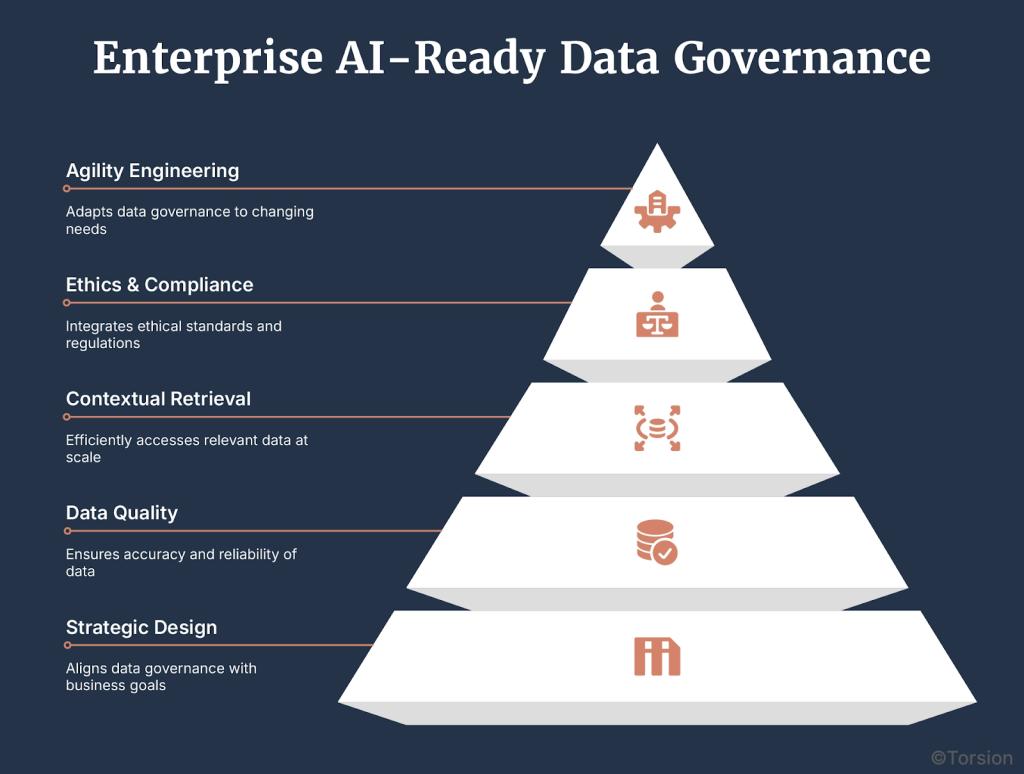TL;DR
Enterprise AI isn’t underdelivering because the models are bad.
It’s underdelivering because leaders are building LLM initiatives on top of disorganized, ungoverned, misunderstood data.
And when that happens, hallucinations are inevitable, no longer a surprise.
Why Enterprise AI Keeps Failing (and What No One’s Admitting)
Walk into a boardroom today and mention LLMs. Watch the room temperature drop.
The hype cycle’s over. Executives aren’t asking “How do we lead with AI?”
They’re asking: “Why haven’t we seen results?”
Or worse: “What did we just spend all that money on?”
The issue isn’t model quality. It’s foundation quality.
Data science teams are being asked to ship production-grade GenAI systems on top of data infrastructure that wasn’t designed for scale, auditability, or real-time learning.
The result? Fragile systems, opaque outputs, and stalled momentum.
Enterprise AI doesn’t fail at the model layer. It fails at the data layer.
If your data isn’t governed, trusted, and engineered for retrieval, you’re not doing Enterprise AI.
You’re doing expensive prototyping with a long tail of risk.
Why Legacy Data Governance Fails Advanced Enterprise AI
If Enterprise AI-ready data governance is the fix, what’s broken today?
Legacy governance frameworks were built for a different era—structured data, static reports, and slow-moving compliance checklists. They were never designed for the scale, speed, and complexity of modern Enterprise AI.
Large Language Models thrive on unstructured data: emails, documents, product manuals, support logs, chat transcripts. But most governance frameworks don’t even register these assets, let alone validate them.
The result? Blind spots everywhere.
And for data scientists, this creates a perfect storm:
- You can’t trace where the data came from or how it was changed.
- You don’t know what’s safe to use, or what violates policy.
- You spend more time scrubbing inputs than training models.
That’s how “garbage in, garbage out” becomes a million-dollar mistake.
I’ve seen promising GenAI pilots implode because nobody could guarantee data quality, while hallucinations damage customer trust. And I’ve also seen compliance teams hit the brakes after discovering models trained on sensitive or non-compliant data.
Even worse? Legacy governance doesn’t touch critical Enterprise AI artifacts like models, embeddings, or MLOps pipelines.
So while the business thinks it’s scaling Enterprise AI, the truth is: it’s flying blind.
This is expensive to say the least. Stalled projects, missed KPIs, burned credibility.
Data teams are working overtime just to keep systems afloat, let alone drive innovation.
To move forward, we need a new playbook. One built for the AI-native enterprises.
The 2025 “Enterprise AI-Ready” Data Governance Blueprint
So what does “Enterprise AI-ready” governance actually look like?
It’s not just a set of policies. It’s a living, integrated system that connects data engineering, model development, compliance, and business goals in real time.
Here’s the blueprint:
1. Strategic by Design
Governance can’t sit in a silo. It must be wired into your Enterprise AI strategy from day one. That means aligning data initiatives with the company’s Enterprise AI roadmap, so every pipeline, model, and retrieval mechanism supports a clear business outcome.
2. Built on Data Quality
No GenAI model is better than the data feeding it. Robust frameworks for profiling, validation, and monitoring aren’t optional, they’re the engine. Think: schema enforcement, anomaly detection, dynamic data contracts. Not glamorous, but absolutely essential.
3. Contextual Retrieval at Scale
The next generation of Enterprise AI demands smarter access to knowledge. That’s where retrieval-augmented generation (RAG) and vector databases come in. But if your data isn’t clean, organized, and retrievable, these systems don’t work. Governance needs to ensure relevance and freshness at the edge.
4. Ethics and Compliance by Default
We’re past the point of treating bias and regulatory risk as afterthoughts. Enterprise AI-ready governance bakes in fairness audits, consent tracking, and automated policy enforcement, especially across LLM training datasets. GDPR, HIPAA, the EU AI Act are checkboxes, while also shaping the architecture now.
5. Engineered for Agility
This is where data engineers step into the spotlight. They’re the builders behind the pipelines, lineage systems, observability layers, and model registries. With the right tools, modern orchestration, metadata platforms, and embedded MLOps they can automate governance without slowing teams down.
I believe data engineers will be the strategic architects of Enterprise AI success in 2025. Not just the folks cleaning up data but strategic enablers, embedding trust and performance into every model interaction.
With the right foundation, mid-level engineers can implement these systems today. What they need is clear direction, modern tooling, and buy-in from the top.

The Enterprise Dividend: Trust, Innovation, Growth
When governance is done right, and by that I mean baked into the DNA of Enterprise AI, the payoff proves to be strategic.
You earn trust.
With clean, compliant, explainable data pipelines, teams stop second-guessing outputs. Legal, security, and risk stop throwing up roadblocks. Business units start leaning in. Confidence in Enterprise AI systems goes up and so does adoption.
You unlock innovation.
When data scientists don’t have to spend 70% of their time wrangling data or navigating compliance ambiguity, they can move fast. That means more time building. More time testing. More time delivering real, Enterprise AI-powered features to the business.
And with contextual data access through RAG pipelines or smart retrieval layers, LLMs become dramatically more useful, answering real business questions with accuracy and nuance.
You drive measurable growth.
This isn’t theoretical. I’ve seen clients:
- Cut model deployment times substantially
- Reduce compliance review cycles from weeks to hours
- Slash hallucination rates by validating unstructured inputs
- Increase product revenue with Enterprise AI-enhanced user experiences
That’s why, governance is a multiplier. It makes your Enterprise AI faster, safer, and more impactful.
And in a world where competitors are racing to operationalize LLMs, that edge can be the difference between leading and lagging.

Your 2025 Enterprise AI Governance Imperative: Act Now
This brings me to the core of my argument. Enterprise AI-ready data governance isn’t optional anymore. It’s a strategic imperative.
In 2025, the companies that win with Enterprise AI will definitely have the best models. But they’ll also be the ones that built the cleanest, most agile, and most trusted foundations.
So ask yourself:
- Is your data really ready for LLMs and GenAI?
- Can your governance systems adapt in real time?
- Are you building Enterprise AI ethical, transparent, and reliable, along with being powerful?
If not, you’re leaving value on the table. You’re also opening yourself up to compliance risks, stalled deployments, and stakeholder skepticism.
So, if you want to build something that lasts, something that delivers real trust, real speed, and real growth, this is where you start.





